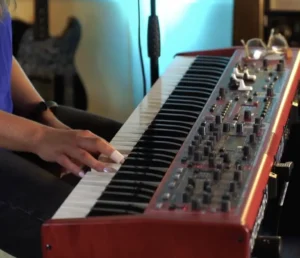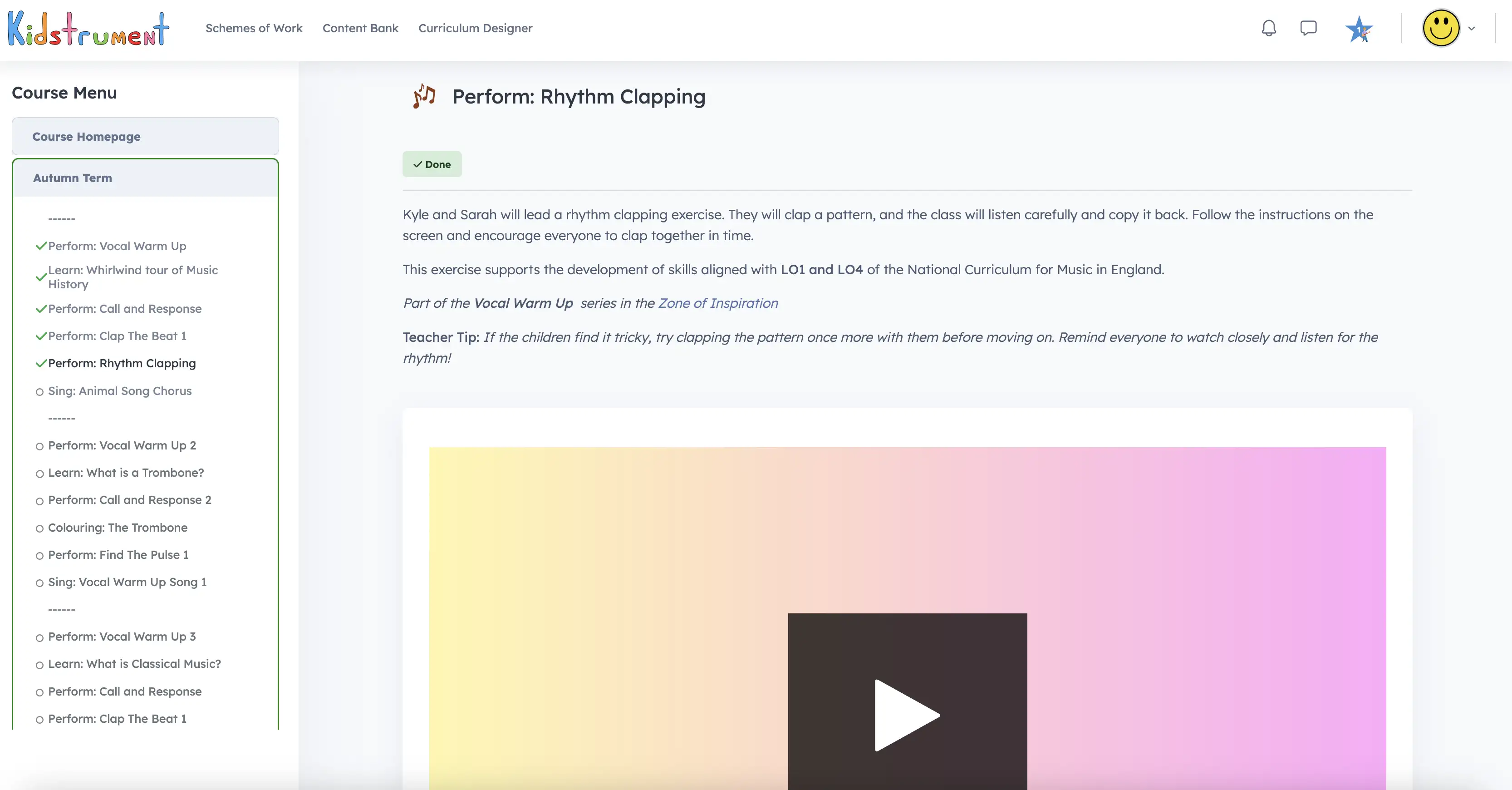
This is one activity from a content bank of 600+ classroom-ready music activities. Explore it anytime and unlock them all with Kidstrument.
Kidstrument is made up of activities that are repeated and remixed to offer varied and flexible teaching. Each activity is part of a wider module with many versions.
All activities, prepared pathways and inspection-ready reporting.
Get KidstrumentIn this video, Victoria will ask Jodi to play a chord on the piano. As a class, your job is to listen carefully and decide whether the chord is Major (which typically sounds bright or happy) or Minor (which usually sounds dark or sad). This activity is a great way to develop your ear training skills!
Teacher Tip: Ask the class which they think it is, then have them explain why. Feel free to replay the chord if needed!
Kidstrument works best on a bigger screen. 📱➡️💻
Please visit this page on a laptop, tablet, or classroom display for the full experience.
This is the normal lesson view in Kidstrument — the full teacher layout you’ll use in class.
